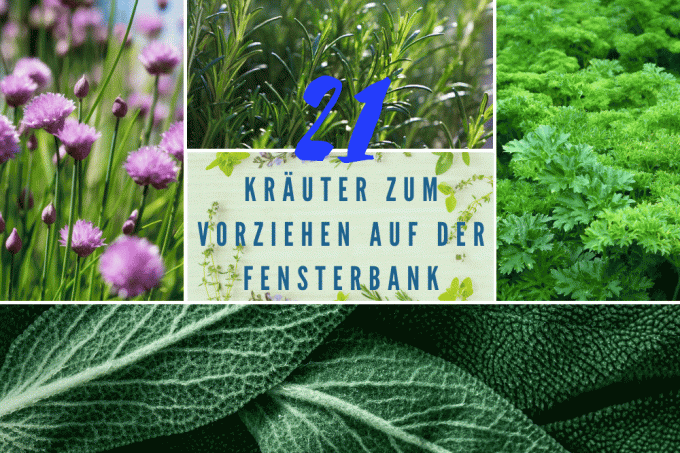
table of contents
- Prefer herbs: 21 types
- Time and procedure
- Prick out
- Herbs to prefer: A to K
- Herbs to be preferred: L - R
- Herbs to be preferred: S - Z
- Planting out - the right time
Cooking with fresh herbs not only provides aromatic variety in the food, but also provides additional vitamins and other important micronutrients. So that you can start your own harvest early in the year, simply pull out the herbs you want on the window sill at home. Find out which types are suitable for this and how best to proceed in this article.
Prefer herbs: 21 types
Herbs make cooking varied and conjure up different flavors in the food. The spices taste best when they are freshly picked, which is why growing them in the garden, on the balcony or even in a pot on the windowsill is definitely worthwhile. Many popular kitchen herbs are quite sensitive to frost and are therefore only allowed into the garden bed late. However, you can easily bring these species forward from February or March and thus extend the harvest period. The following 21 herbs are particularly suitable for pre-serving on the windowsill.
Time and procedure
So that you can grow your own herbs successfully, you should follow these tips for the procedure for sowing and care:
- Use nutrient-poor seed compost for germination.
- Mix these in a ratio of 1: 2 with sand.
- Potting soil or potting soil is unsuitable for this purpose.
- Use an indoor greenhouse.
- You can also make one yourself from a cut off PET bottle.
- The high humidity, which promotes germination, is important.
- Use a spray bottle to keep the substrate moist, but not wet.
- Ventilate the mini greenhouse at least once a day.
- Do not fertilize!
It is also important to note the difference between light and dark germs. The seeds of so-called light germinators must not be covered with substrate, otherwise they will not germinate. Conversely, this applies to dark germs, which in turn have to be put into the ground. Place the seed container in a bright, but not directly sunny, and warm place.
Prick out
Separate the seedlings as soon as the second pair of leaves has formed. The expert calls this process also pricking out. This ensures that the vigorous young plants have enough space to grow. Only now are you allowed to get out of the greenhouse, whereby you do not take the herb plants out of their protected environment without preparation. Get them used to it slowly by ventilating a little longer each day. As soon as the herb plants are about ten centimeters high, place them in a suitable substrate - depending on the type, nutrient-rich or lean.
Herbs to prefer: A to K
You can generally prefer the herbs listed here from February / March. The indicated time for sowing is only an orientation point.
1. basil
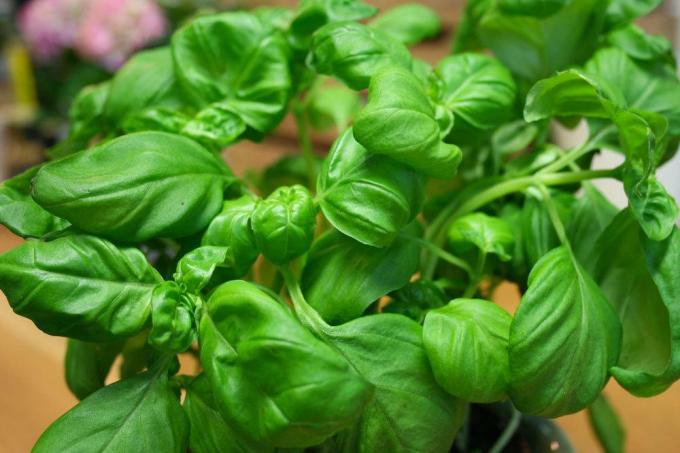
Botanical name: Ocimum basilicum
Location: sunny
Substrate: well drained, rich in nutrients
Light germs / dark germs: light germs, do not cover seeds with soil
Sowing: basically possible all year round, but best in March / April
Germination temperature: 20 to 22 ° C
Germination time: 15 to 18 days
When to plant out: late May / early June
Flowering period: June to September
Harvest time: from May
Annual / Perennial: perennial
Winter hardy: no, cultivate cool and frost-free in winter
Tip: You can cultivate non-hardy herbs such as the popular basil all year round in a sufficiently large plant pot. Make sure that the plants get enough water and nutrients, light and air are also important. The delicate basil in particular does not feel particularly comfortable on the windowsill, so you can use the It is best to place the plant outside during the warm summer months - for example on the balcony or the Terrace.
2. Savory (annual)

Botanical name: Satureja spec.
Location: full sun
Substrate: dry, poor in nutrients, sandy
Light germs / dark germs: light germs
Sowing: from mid-March / outdoors from May
Germination temperature: 20 to 25 ° C
Germination time: 14 to 21 days
When to plant out: from mid to late May
Flowering period: June to October
Harvest time: April to June
Annual / Perennial: annual
Winter hardy: no, has to be sown again every year
3. Borage
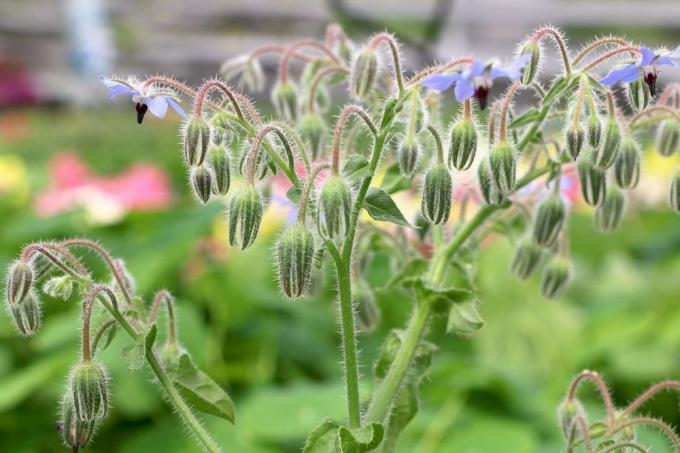
Botanical name: Borago officinalis
Location: sunny
Substrate: nutrient-rich, moist
Light germinator / dark germinator: dark germinator, sowing depth two centimeters
Sowing: from the beginning of March
Germination temperature: 20 to 25 ° C
Germination time: 8 to 14 days
When to plant out: April to June
Flowering period: May to September
Harvest time: May to October
Annual / Perennial: annual
Winter hardy: no, has to be sown again every year
4. dill
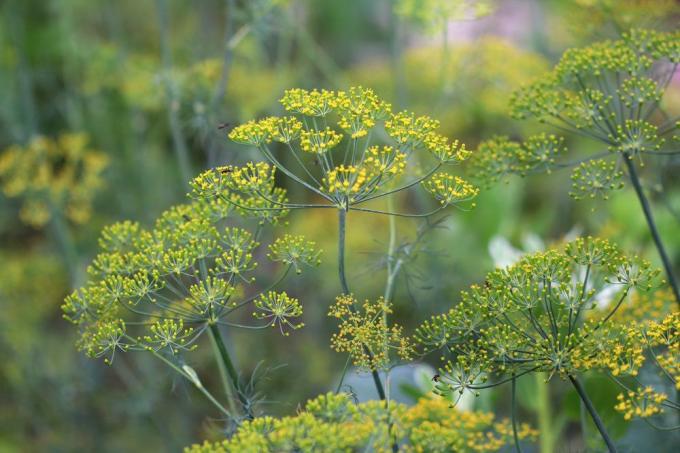
Botanical name: Anethum graveolens
Location: sunny
Substrate: humus, well drained, rich in nutrients
Light germinator / dark germinator: dark germinator, sowing depth 1 centimeter
Sowing: possible all year round
Germination temperature: 18 to 24 ° C
Germination time: 14 to 21 days
When to plant out: April / May
Flowering period: July to August
Harvest time: June to September
Annual / Perennial: perennial
Hardy: no, bring it into the house in winter
5. tarragon

Botanical name: Artemisia dracunculus
Location: sunny
Substrate: nutrient-rich, moist
Light germs / dark germs: light germs
Sowing: from mid-April
Germination temperature: 18 to 25 ° C
Germination time: 7 to 14 days
When to plant out: from April / May
Flowering period: May to June
Harvest time: before flowering
Annual / Perennial: perennial
Winter hardy: depending on the species
6. Chamomile, real
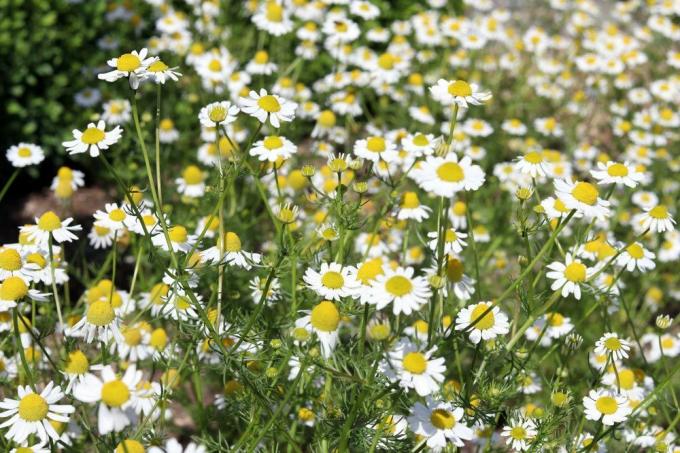
Botanical name: Matricaria recutita
Location: sunny to partially shaded
Substrate: nutrient-rich, loamy to sandy
Light germs / dark germs: light germs
Sowing: from the beginning of March
Germination temperature: 16 to 25 ° C
Germination time: 15 to 20 days
When to plant out: March to May
Flowering period: May to October
Harvest time: May to October
Annual / Perennial: annual
Winter hardy: no, has to be sown again every year
7. chervil

Botanical name: Anthriscus cerefolium
Location: sunny to partially shaded
Substrate: humus, well drained
Light germs / dark germs: light germs
Sowing: from the beginning of March
Germination temperature: 18 to 25 ° C
Germination time: 10 to 14 days
When to plant out: April to May
Flowering period: June to August
Harvest time: May to September
Annual / Multi-year: Multi-year (two-year)
Hardy: yes
8. Coriander, real one

Botanical name: Coriandrum sativum
Location: sunny to partially shaded
Substrate: rich in nutrients
Light germinator / dark germinator: dark germinator, sowing depth 1 centimeter
Sowing: from the beginning of April
Germination temperature: 10 to 25 ° C
Germination time: 15 to 20 days
When to plant out: April to June
Flowering period: June to August
Harvest time: before or after flowering
Annual / Perennial: annual
Winter hardy: no, has to be sown again every year
Tip: In contrast to the real coriander, the Vietnamese coriander is perennial and can also be cultivated on the windowsill.
9. Caraway, real one
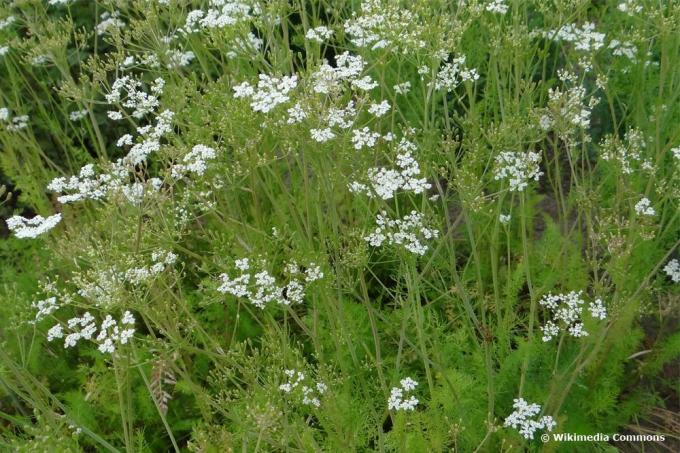
Botanical name: Carum carvi
Location: sunny to partially shaded
Substrate: nutrient-rich, loamy
Light germs / dark germs: light germs
Sowing: from the beginning of March
Germination temperature: 18 to 25 ° C
Germination time: 14 to 21 days
When to plant out: late March to late April
Flowering period: May to July
Harvest time: July (seeds)
Annual / Multi-year: Multi-year (two-year)
Hardy: yes
Herbs to be preferred: L - R
10. lavender
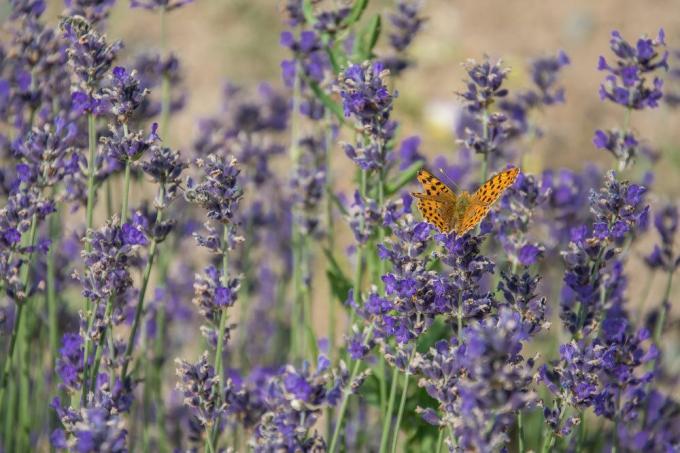
Botanical name: Lavandula angustifolia
Location: full sun to sunny
Substrate: poor in nutrients, sandy, calcareous, dry
Light germinator / dark germinator: dark germinator, seed depth 0.5 centimeters
Sowing: from mid-April
Germination temperature: 20 to 25 ° C
Germination time: 21 to 28 days
When to plant out: from mid-May
Flowering period: May to September
Harvest time: June to September
Annual / Perennial: perennial
Winter hardy: depending on the variety, winter protection makes sense
11. marjoram
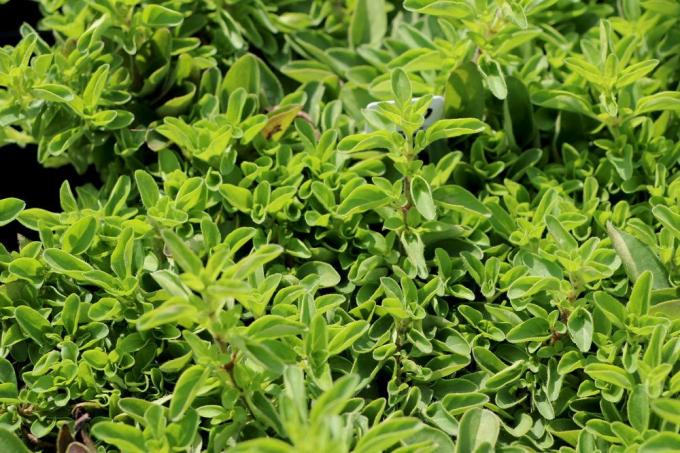
Botanical name: Origanum majorana
Location: sunny
Substrate: humus, slightly sandy, loose
Light germs / dark germs: light germs
Sowing: from mid-April
Germination temperature: 18 to 25 ° C
Germination time: 10 to 16 days
When to plant out: May to June
Flowering period: June to September
Harvest time: before flowering
Annual / Perennial: perennial
Winter hardy: no, frost-free wintering on the windowsill is possible
12. oregano

Botanical name: Origanum vulgare
Location: sunny
Substrate: poor in nutrients. dry
Light germs / dark germs: light germs
Sowing: from mid-April
Germination temperature: 18 to 25 ° C
Germination time: 8 to 16 days
When to plant out: May
Flowering period: July to September
Harvest time: all year round
Annual / Perennial: perennial
Hardy: yes
13. parsley
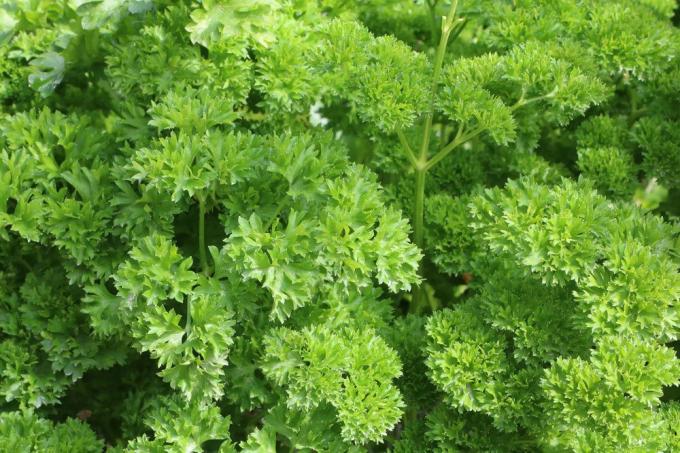
Botanical name: Petroselinum crispum
Location: sunny to partially shaded
Substrate: rich in humus, rich in nutrients, slightly calcareous
Light germinator / dark germinator: dark germinator, sowing depth 1 centimeter
Sowing: from the beginning of March
Germination temperature: 18 to 25 ° C
Germination time: 14 to 28 days
When to plant out: October to May
Flowering period: June to August
Harvest time: all year round
Annual / Perennial: perennial
Hardy: yes
14. peppermint

Botanical name: Mentha x piperita
Location: partially shaded
Substrate: rich in nutrients, moist, calcareous
Light germs / dark germs: light germs
Sowing: from the beginning of March
Germination temperature: 18 to 25 ° C
Germination time: 10 to 21 days
When to plant out: March to April
Flowering period: June to September
Harvest time: May to September
Annual / Perennial: perennial
Hardy: yes
Tip: In addition to the classic peppermint, there is a whole range of different mints with interesting flavors that are definitely worth trying.
15. rosemary
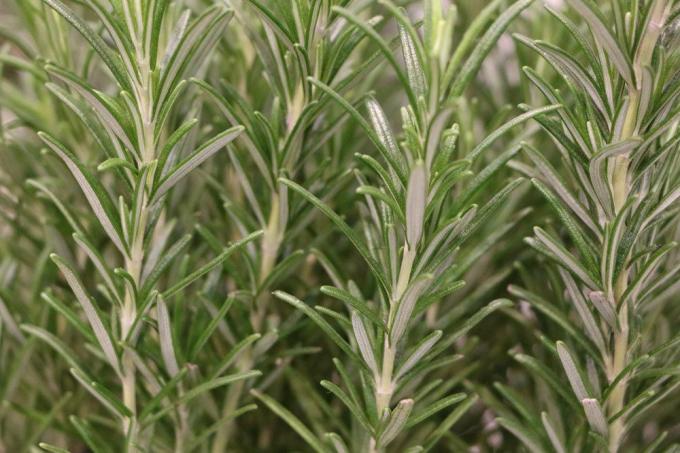
Botanical name: Rosmarinus officinalis
Location: full sun to sunny
Substrate: poor in nutrients, sandy, dry
Light germinator / dark germinator: dark germinator, sowing depth 1 centimeter
Sowing: from the beginning of April
Germination temperature: 18 to 25 ° C
Germination time: approx. 28 days
When to plant out: April to May
Flowering period: March to May
Harvest time: May to October
Annual / Perennial: perennial
Winter hardy: no, overwinter in a cool and frost-free place
Herbs to be preferred: S - Z
16. sage
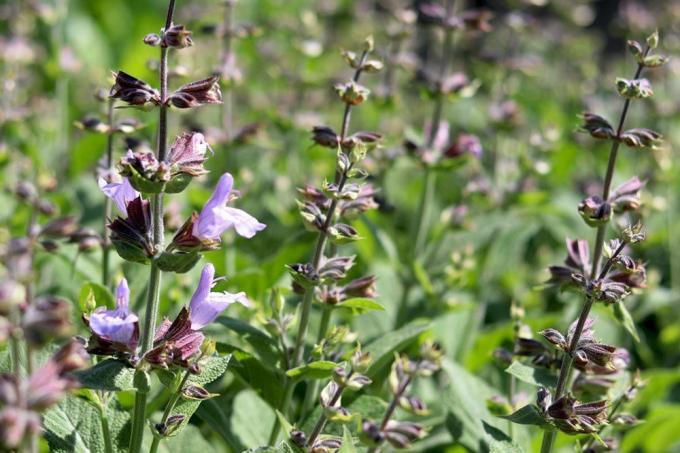
Botanical name: Salvia officinalis
Location: sunny
Substrate: poor in nutrients, sandy
Light germs / dark germs: cover very thinly with earth (sand)
Sowing: from mid-April
Germination temperature: 18 to 25 ° C
Germination time: 7 to 21 days
When to plant out: May
Flowering period: May to July
Harvest time: April to September
Annual / Perennial: perennial
Winter hardy: no, overwinter in a cool and frost-free place
17. sorrel
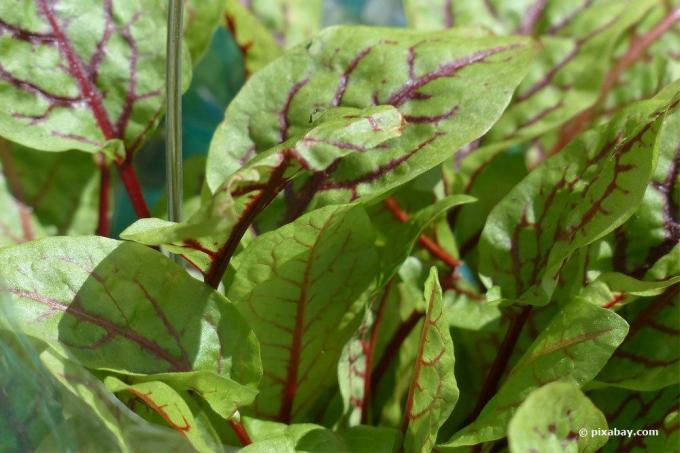
Botanical name: Rumex acetosa
Location: sunny to partially shaded
Substrate: humus, rich in nutrients, slightly moist
Light germs / dark germs: light germs
Sowing: from the beginning of March
Germination temperature: 16 to 23 ° C
Germination time: 7 to 21 days
When to plant out: March to April
Flowering period: May to September
Harvest time: May to August
Annual / Perennial: perennial
Hardy: yes
18. chives

Botanical name: Allium schoenoprasum
Location: sunny to partially shaded
Substrate: loamy to sandy
Light germinator / dark germinator: dark germinator, sowing depth 2 centimeters
Sowing: from the beginning of April
Germination temperature: 18 to 25 ° C
Germination time: 14 to 21 days
When to plant out: March to May
Flowering period: May to August
Harvest time: May to September
Annual / Perennial: perennial
Hardy: yes
19. thyme
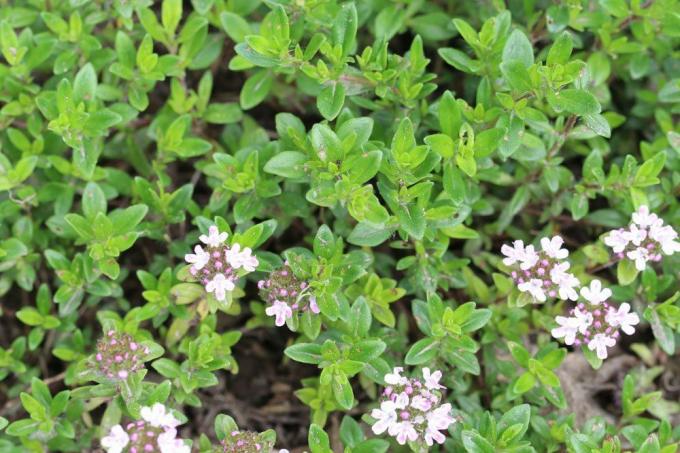
Botanical name: Thymus vulgaris
Location: sandy
Substrate: poor in nutrients, sandy
Light germs / dark germs: light germs
Sowing: from the beginning of April
Germination temperature: 16 to 22 ° C
Germination time: 10 to 18 days
When to plant out: April to June
Flowering period: June to October
Harvest time: May to October
Annual / Perennial: perennial
Winter hardy: depending on the variety
20. hyssop
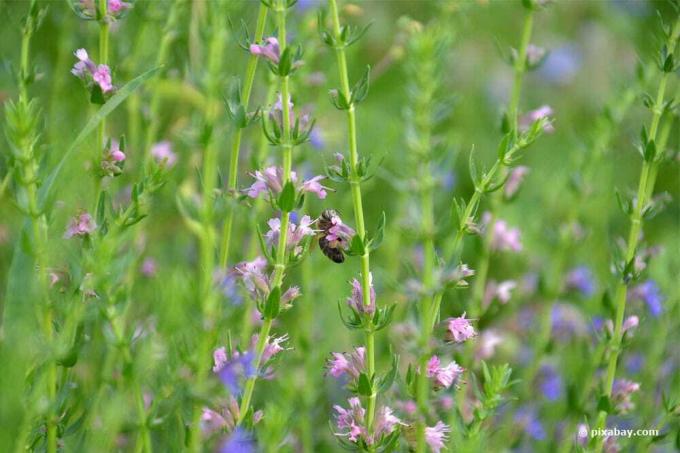
Botanical name: Hyssopus officinalis
Location: sunny
Substrate: rich in nutrients, calcareous
Light germs / dark germs: light germs
Sowing: from mid-April
Germination temperature: 8 to 25 ° C
Germination time: 7 to 21 days
When to plant out: from April
Flowering period: June to September
Harvest time: June to August
Annual / Perennial: perennial
Hardy: yes
21. Lemon balm
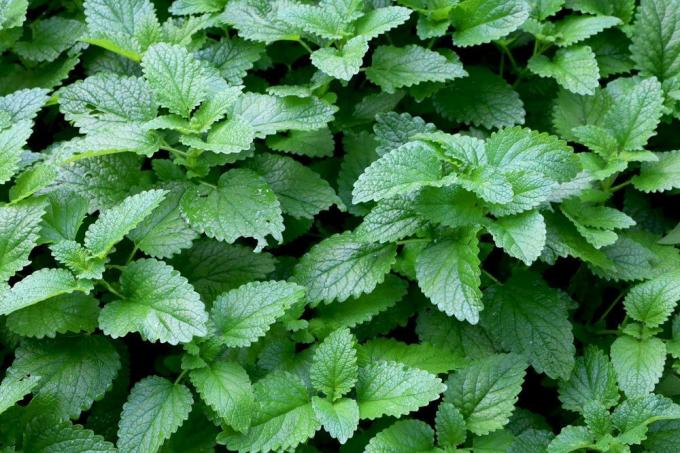
Botanical name: Melissa officinalis
Location: full sun to sunny
Substrate: humic, loose
Light germs / dark germs: light germs
Sowing: from the beginning of April
Germination temperature: 20 to 30 ° C
Germination time: 21 to 28 days
When to plant out: late April to late May
Flowering period: June to August
Harvest time: June to September
Annual / Perennial: perennial
Hardy: yes
Planting out - the right time
After the herbs have been grown on the windowsill, the question of what to do next arises. Ideally, you should cultivate the young herbs outside, as this is where they thrive best. However, the timing is absolutely essential: put the young plants outside in mild and dry weather, and bring them in first if there is a threat of post-frost. Gradually get them used to the new location. After hardening, the plants can finally remain outdoors or be planted in the garden.
Tip: You don't have to prefer these herbs, the seeds can be put into the bed right away: wild garlic, watercress, garden cress, lovage, rocket, woodruff and purslane. All of these species need frost so that the seeds' inhibition of sprouting is broken and the plants can germinate.
Vegetables can also be used prefer on the windowsill.



